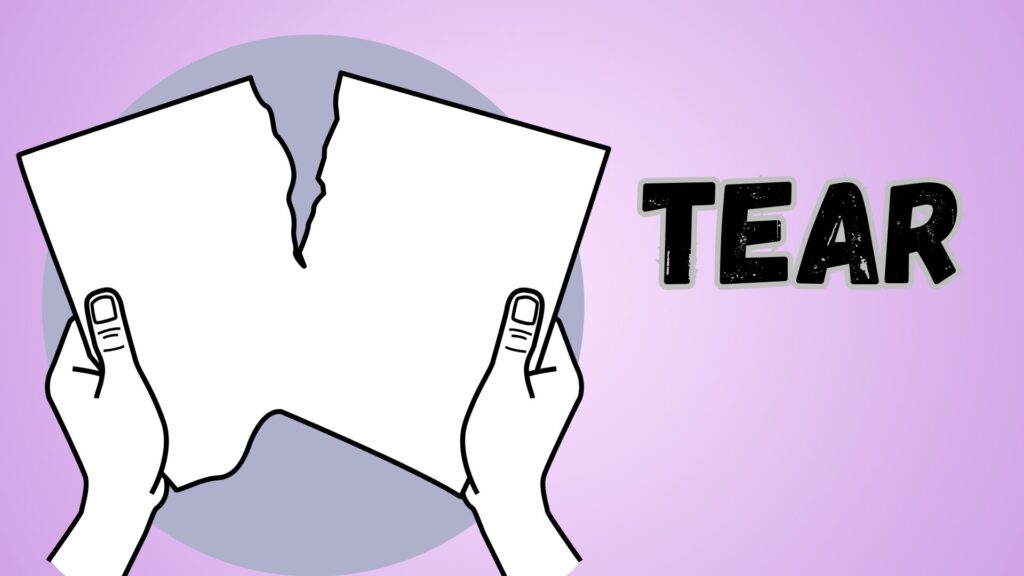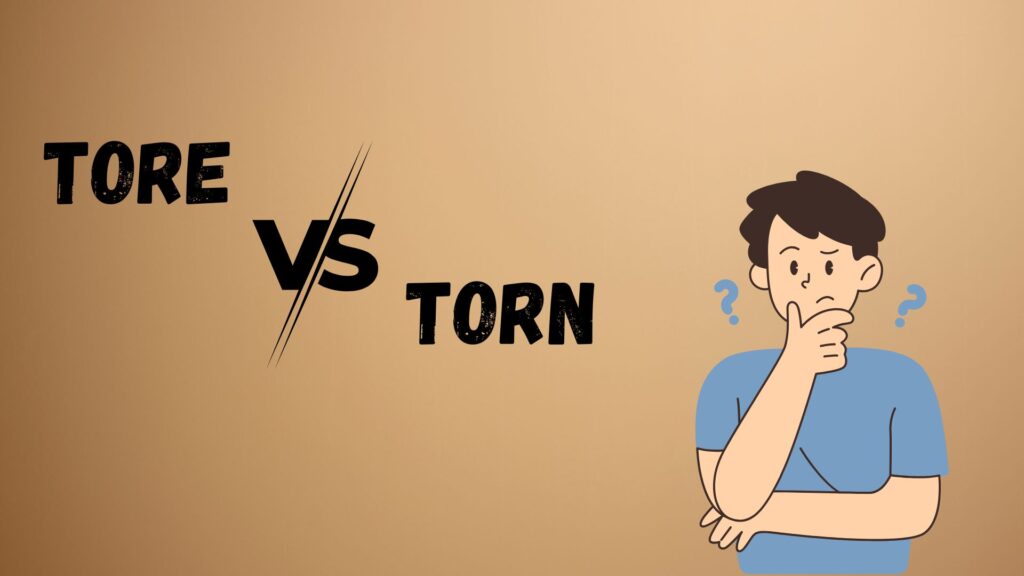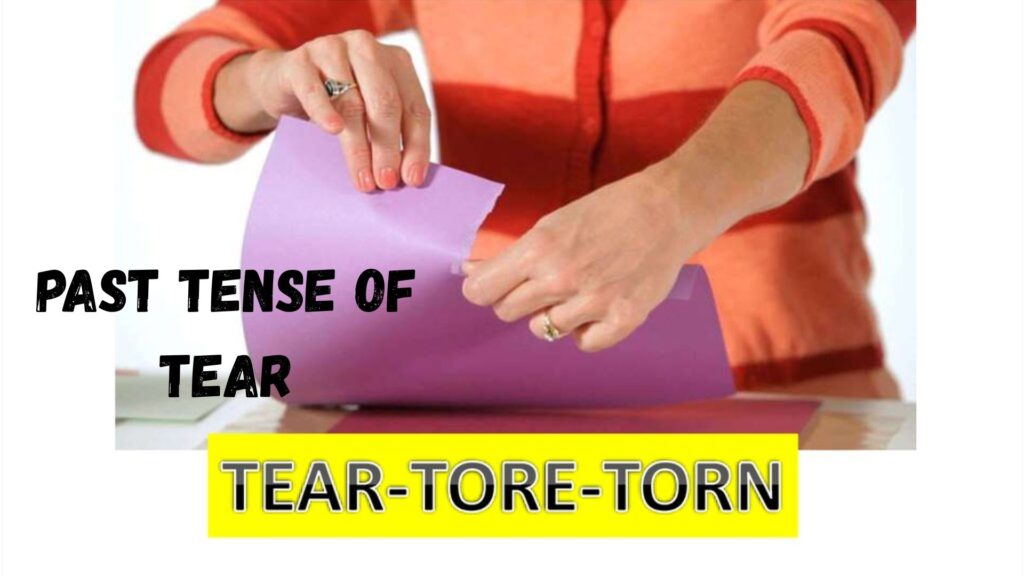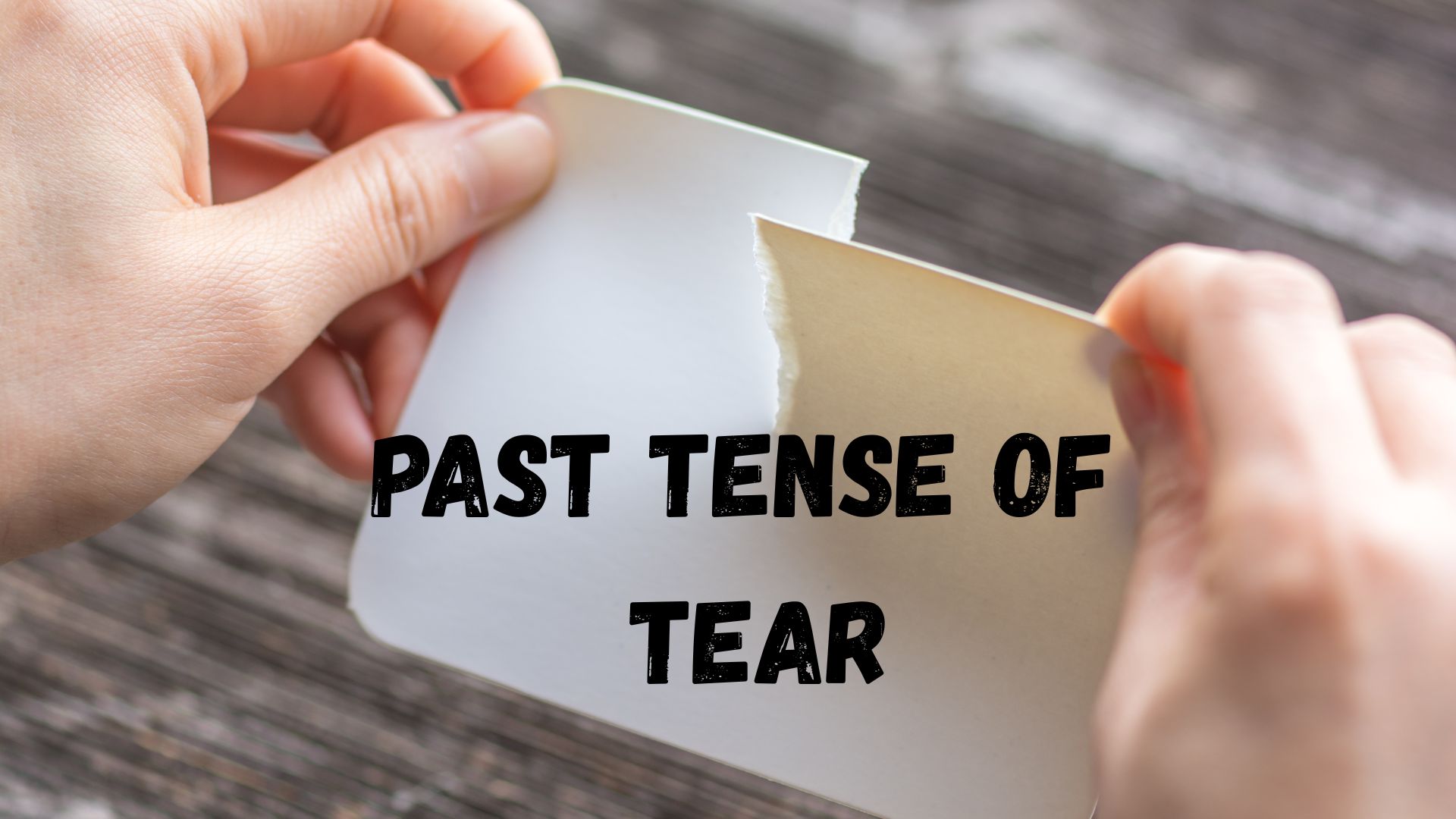If you’ve ever stared at a sentence and wondered whether to say “I tore the page” or “I had torn the page,” you’re not alone. English verb conjugation especially when it comes to irregular verbs can trip up even native speakers. One such tricky verb is tear. It’s a common word, but its past tense and past participle forms confuse many learners (and even writers).
Let’s break it down step by step with practical examples and helpful scenarios.
Understanding the Verb “Tear”

The word tear (pronounced /tɛr/) is a verb that means to pull something apart or to damage it by ripping. You’ll hear it used when talking about ripping paper, damaging fabric, or even metaphorically, like tearing apart a friendship.
This verb is an irregular verb, which means it doesn’t follow the standard pattern of adding “-ed” to form the past tense.
✅ Verb Forms of Tear
| Verb Form | Example |
|---|---|
| Base form | tear |
| Simple past | tore |
| Past participle | torn |
| Present participle | tearing |
| 3rd person singular | tears |
Tore vs Torn: What’s the Difference?

✳️ Tore = Simple past tense
Use “tore” when describing a completed action that happened in the past and doesn’t require any auxiliary verbs like “have” or “had.”
Example:
I tore my shirt when I jumped the fence.
“Tore” stands on its own. No helping verb needed.
✳️ Torn = Past participle
Use “torn” when the verb is paired with auxiliary verbs like have, has, or had, especially in perfect tenses.
Example:
She has torn the envelope open before reading the address.
Here, “torn” works as part of the present perfect tense.
📧 Scenario Example #1: Business Email
Subject: Office Incident Report
Hi Robert,
I just wanted to let you know that the corner of the finance report was torn during transit. I’ve attached a scanned copy of the document for your reference.
Please let me know if you’d like a reprint.
Thanks,
Amanda
✅ This sentence correctly uses the past participle “torn” with the passive construction (“was torn”).
🤔 Common Mistakes with “Tear”
Let’s look at some common grammar errors and how to fix them:
| ❌ Incorrect | ✅ Correct |
|---|---|
| He had tore the letter before reading it. | He had torn the letter before reading it. |
| They’ve tore through the entire manual. | They’ve torn through the entire manual. |
| I’ve never tore a muscle before. | I’ve never torn a muscle before. |
Why do these happen?
Because “tore” feels like it should work in those examples. But when using perfect tenses, the past participle form must follow the auxiliary verb in this case, have/has/had. That’s a key grammar rule to keep in mind.
📱 Scenario Example #2: Casual Text Message
Jason:
Dude, did you see my jeans? I can’t wear them tonight.Ryan:
Bro, you’ve torn your jeans right across the knee. It looks like a design now. 😂
✅ “Torn” is used correctly with the present perfect tense (“you’ve torn”).
🧠 Quick Grammar Refresher

To master English verb conjugation, remember how verbs interact with tense, aspect, and auxiliary verbs. Here’s a cheat sheet for tear:
📌 Perfect Tense Rules
- Present perfect → has/have + torn e.g., She has torn her notebook apart in frustration.
- Past perfect → had + torn e.g., I had torn the wrapping paper before noticing the “Do Not Open” label.
- Future perfect → will have + torn e.g., By tomorrow, they will have torn down the building.
Avoid mixing these with “tore” it breaks the tense consistency.
👁️🗨️ But Wait What About “Tear” as a Noun?
Don’t forget tear can also be a noun, pronounced differently (/tɪr/), meaning the salty fluid that comes from your eyes when you cry.
Example:
A single tear rolled down her cheek.
In this sense, you won’t be conjugating it into “tore” or “torn.” But it’s still worth noting because this homograph (same spelling, different pronunciation and meaning) can confuse learners.
📘 Real-World Example: Literature Style
“She clutched the letter with trembling hands.
It was crumpled, torn at the edges, and stained with ink.”
Using “torn” here describes a past action affecting the present state a perfect use of the past participle.
🗂️ Quick Reference Table
| Tense | Correct Usage | Incorrect Usage |
|---|---|---|
| Simple past | I tore the contract. | I torn the contract. ❌ |
| Present perfect | I have torn the page. | I have tore the page. ❌ |
| Past perfect | She had torn the dress before the event. | She had tore the dress. ❌ |
| Passive (past participle) | The poster was torn by accident. | The poster was tore. ❌ |
🧩 Tips for ESL Learners
- Check for helping verbs like “have,” “has,” or “had.” If they’re present, use torn.
- If there’s no helper, just describing a past event? Use tore.
- Listen to how native speakers use “tore” and “torn” in conversations, shows, or audiobooks.
- When in doubt, try substituting the verb “eat” in your sentence:
- Would you say “I have ate”? ❌
- No, it’s “I have eaten” just like “I have torn.”
🔚 Final Thoughts
So, what’s the past tense of tear?
- The simple past is tore.
- The past participle is torn used with have, has, or had.
- And if you’re crying? That’s a tear (noun), not a verb.
Next time you write, say, or edit a sentence with “tear,” pause and think: Do I need a helping verb here? If yes, go with “torn.” If no, “tore” probably fits just fine.

